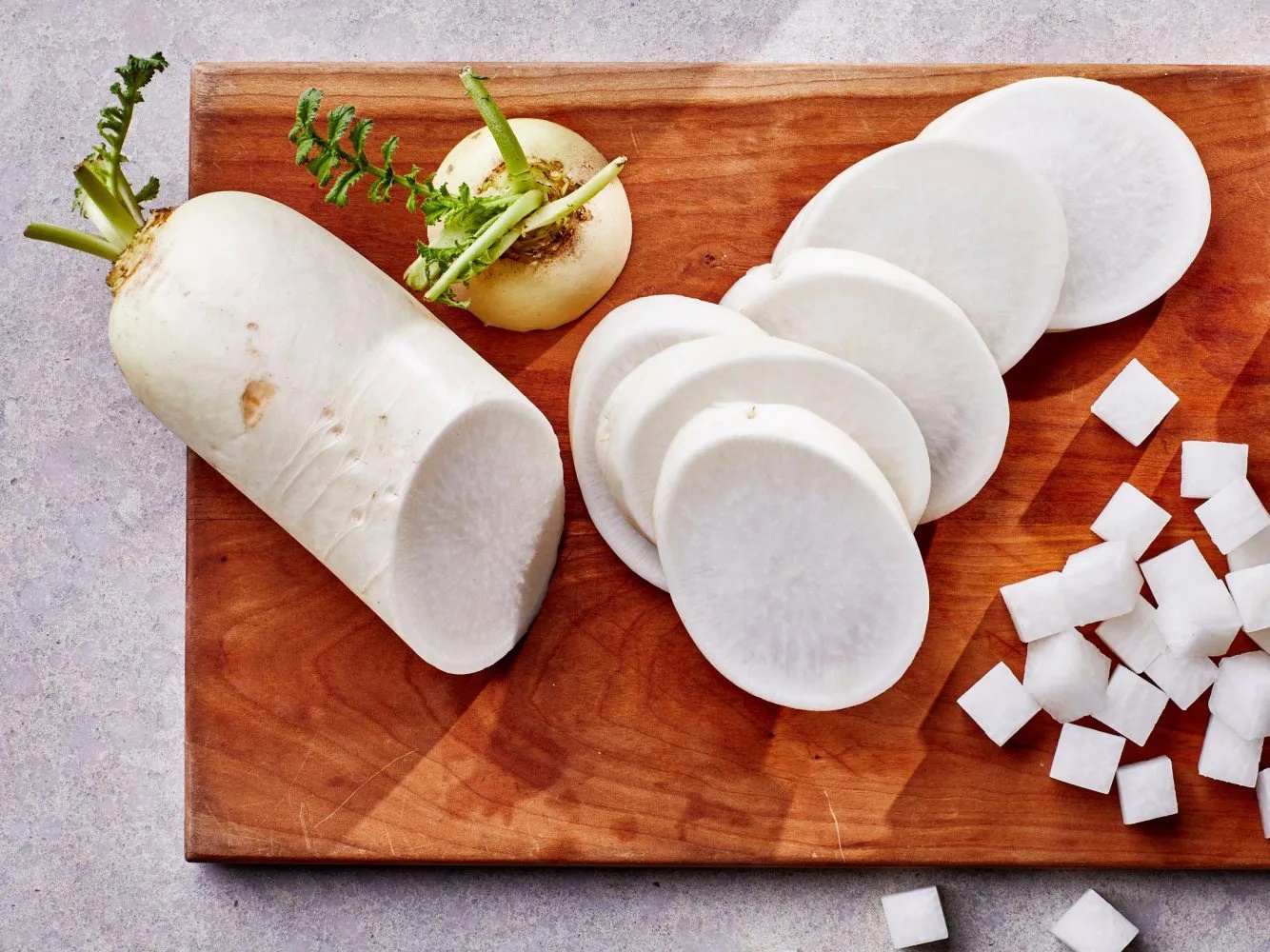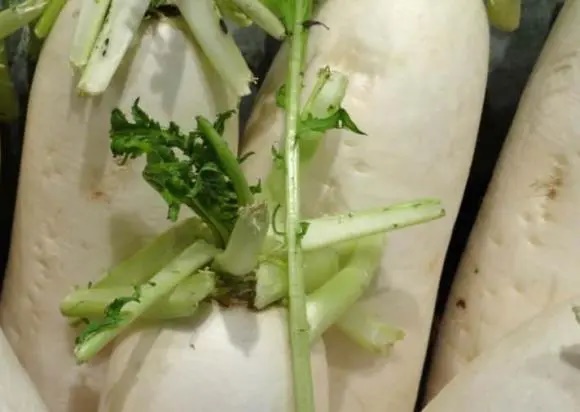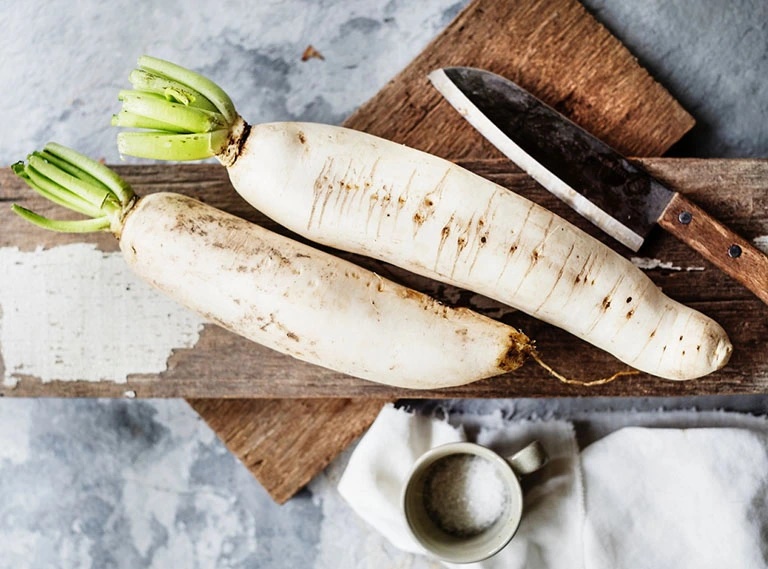According to Ms. Thu, a seasoned vegetable trader at Lĩnh Nam wholesale market, choosing turnips may seem easy, but it can be tricky. Here are 4 types of turnips that you should avoid.
The first type is soft turnips
Soft turnips are turnips that, when cut, the middle part of the turnip will turn into coarse fibers, the color will not be as white as it should be, but rather pale, even slightly yellow, with black spots appearing. The taste of turnips in this condition will be greatly reduced, no longer sweet or crispy, and may even contain harmful substances. Therefore, it is best not to choose soft turnips.

So how do you know if a turnip is soft? In fact, the method is very simple. When choosing turnips, you can hold the turnip in your hand. Fresh turnips will have enough water, so they will naturally feel heavier. On the other hand, if the turnip is light and airy when held in your hand, it will look like this. Turnips with low water content are more prone to rot at the core. Not only that, if you feel that the turnip skin is rough to the touch, it means that the turnip has been left out for too long and is no longer fresh, and this type of turnip is particularly prone to decay, Ms. Thu said.
The second type is turnips without leaves

You need to be careful when buying turnips. Each turnip will have a few leaves, and some people may think that these turnip leaves are inedible and will add to the weight. But in reality, if there are still green leaves on the turnip, it means that the turnip is very fresh.
On the contrary, if there are no turnip leaves or the turnip leaves have turned yellow and dried up, it means that the turnip has been left out for too long, lacking moisture and nutrients. The quality of turnips in this condition will be relatively poor, and people should not buy them.
The third type is cracked turnips
When buying turnips, you may also notice that some turnips are cracked. These turnips may still look fresh, so many people think it’s not a problem.
However, in reality, the causes of cracked turnips can be physiological damage due to large temperature differences, or due to improper watering and fertilizing, which can cause the fruit to crack when exposed to intense sunlight after rain, or even physiological damage caused by the turnip itself by producing excessive hormones and being used improperly.
Cracked turnips not only look unappealing, but also reduce the freshness and nutritional value of the turnips. Moreover, the cracks can be invaded by bacteria, so it is best not to buy this type of turnip.
The fourth type is turnips with black spots
If turnips are left for a long time, black or brown spots may appear on the skin, and they may even have a strange smell. This means that these turnips have decayed, so they should not be bought, let alone eaten. Some people may think that they can simply cut off the damaged parts and still eat the rest of the turnip.

However, in reality, spoiled turnips mean that they have been contaminated with bacteria or fungi. Not only do these turnips have an unpleasant taste, but they can also produce harmful metabolic substances, which can affect human health. Therefore, we should discard spoiled turnips in a timely manner and stop eating them.
According to Phụ nữ Việt Nam

































